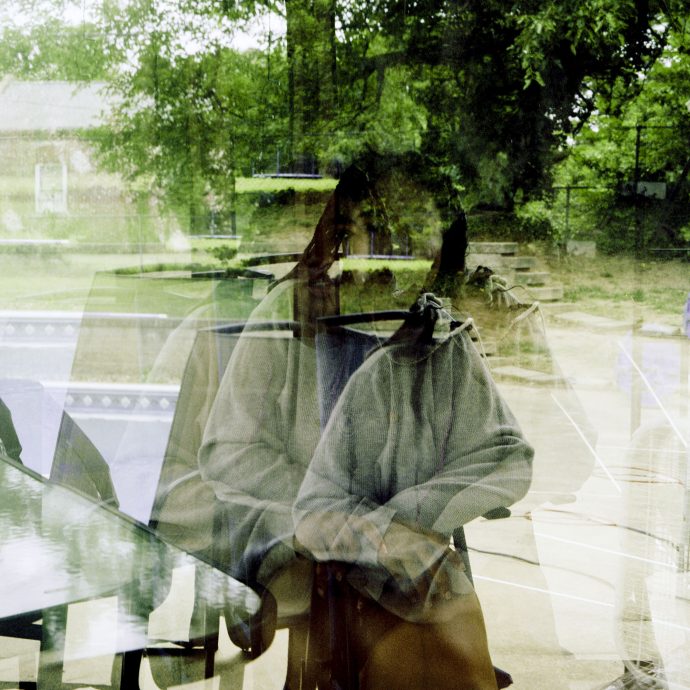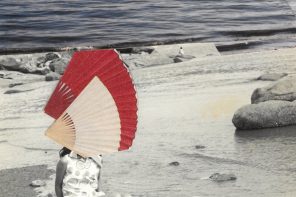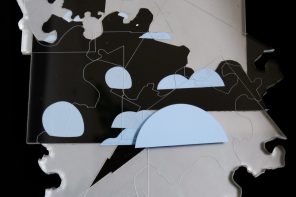a·yat
plural noun
singular: ayah (Arabic), ayeh (Farsi)
- signs, proofs, evidences, lessons, revelations, remarkable events (Wikipedia, Muhammad Muhsin Khan)
- verses (In the context of Islam’s principal scripture, the Quran, ayah is used to mean “verse”, i.e., each statement or paragraph marked by a number) (Wikipedia)
- a mystical woman with piercing eyes who takes your breath away (Urban Dictionary)
- signs or clues, clear evidence of the existence of God (Pakistan Web)
Pink Satin (1989)
For as long as she can remember, seven-year-old Ayeh has been determined to grow her hair long. But every time her hair starts to grow, her aunt asks if she wants to get her hair cut. Ayeh has such great memories of the hair salons her aunt takes her to. The stylists treat her like a grown-up. Her aunt even lets them use a curling iron on her hair. The haircutter convinces her to go short every time. Then, the other moms at school say nice things about her hair and ask where she gets her hair cut.
Ayeh likes to write poetry. After she wrote a poem for Grace Taylor, who has long blond hair, in which she rhymed, “You’re so nice” with “You should be Vice (President),” she was invited to Grace’s home. They picked flowers and gravel from Grace’s yard and tried to sell them in glass jars at the side of the street. Ayeh couldn’t believe that strangers would pay $5 or $10 for flowers they had picked, but she wanted to learn how things worked in Grace’s world. Grace shared the book her parents had published about her for her birthday. They had stayed up late at night to secretly work on it. It was pink and had bunnies and beautiful pictures of spaceships. Ayeh noticed Grace’s pink skis displayed on her bedroom wall. She knew from show-and-tell at school that Grace was an expert skier. Grace and her family go to their cabin in Tahoe almost every weekend in the winter.
Soon after, Ayeh pins her T-shirt with neon smiley faces on the wall with thumbtacks next to her bunk bed in the room she shares with her sister.
At the end of last school year, the students in Ayeh’s class got to choose one of two shows to perform in for their parents. They could do a dance to a pretty song about a place called Kokomo or perform in a serious play about something else. Ayeh wanted to be in the dance performance led by her own teacher. Mrs. Stroeve wore interesting outfits from the Riki store downtown. Mrs. Neu didn’t care about pretty outfits. But Ayeh still signed up for Mrs. Neu’s play. She remembered how uncomfortable her parents felt when she had to square dance with a boy for back-to-school night in first grade.
At parents’ night this year, Ayeh is a cat in a production of Peter and the Wolf. After Ayeh’s mom pins a fuzzy cat tail on her leotard and leggings, she lets her put on her favorite hot pink lipstick for the show. The other kids laugh.
“Are you wearing lipstick?” they ask, “Why?”
Ayeh turns red and runs away. She locks herself inside a stall in the girls’ room and doesn’t come out until Muriel, one of the third-graders, comes to talk to her and promises not to make fun of her and gets all the other girls to come apologize.
“Do you guys promise not to make fun of Ayeh?” Muriel asks.
“Yeah,” they say in unison while Ayeh listens through the door of the girls’ room.
Their performance is a success.
“Ayeh, it’s time for school.” Her mom’s voice calls in the morning.
Ayeh pulls out the pink satin scarf she wore to the mosque last night from the bottom drawer of the olive-green dresser she shares with her sister. She puts it back on. It looks so pretty in the long wooden mirror that hangs behind the bedroom door, woven with a texture that looks like a bouquet of flowers. She walks out, prepared to surprise her parents.
Ayeh’s mom looks amused. Then she tries to smile kindly.
“Why do you have a headscarf on?” she asks.
“Well, I wore it last night and everyone said how nice it was. I thought it would be even better to wear it to school.”
Her mom tells her, “You’re too young. You don’t have to wear one yet.”
“But I want to wear it.”
“Why, Ayeh?”
“You wear one, Mom.”
Her dad appears from the hallway. Ayeh watches her mom catch his glance and then shift her eyes and head pointedly towards Ayeh.
They ask each other in whispers, “What will people think? She’s only in third grade.”
Ayeh persists. They are late for school.
Her mom says, “All right, but just for today. Not tomorrow.”
At school, everyone comments on how pretty her pink scarf is.
“Is it silk?”
“Yes,” she says, before remembering it might be polyester.
Even Mrs. Stroeve asks about it. “Can you tell us about your headscarf? Does it signify something?”
Ayeh enjoys the attention. “Well, I have to wear it because it’s my religion,” she explains. “It means that you’re not supposed to judge people by their hair.”
At home, she tells her mom how much the kids liked her pink satin scarf.
“Is it silk or polyester?” Ayeh asks.
The next day, Ayeh wakes up and chooses a bright sapphire blue satin scarf from her drawer.
When she sits down to her cereal, her mother tells her, “No, Ayeh, you agreed. You don’t have to wear it yet. But when you’re older, you may.”
Burnt Sugar (1991)
Ayeh sits at the watercolor-stained desk in her bedroom, pondering ways she might get into character for tomorrow’s class presentations on the cultures of Native American tribes. Each fourth-grader in class has been given a unique assignment: to present a particular tribe’s customs, from meals to hunting to crafts to religious rituals. Ayeh has been preparing to talk about Hopi children’s games. She has checked out and read some library books on this topic. She’s identified one game she thinks her classmates will enjoy and is planning to give her presentation as a Hopi girl her own age.
As Ayeh plans her talk for the next day, she thinks about how to engage her classmates so they feel like they have traveled back in time to a Hopi community. Unsurprisingly, there are no Native American costumes in her family’s apartment and it’s too late to research them at the library. There is the colorful, mirror-flecked Kermanja Iranian tribal outfit, the one Ayeh’s grandparents mailed from Tehran to help her dream of what beautiful surprises their home country holds, which Ayeh wore last Halloween with a construction-paper-sash for her Miss Universe costume, but that is clearly out of the question.
Ayeh thinks about other costume supplies that might be available, about the makeup in her mom’s collection she gets to rummage through and wear at special occasions. Sometimes at Halloween, Ayeh’s mom uses her dark eyeliner to draw kitten whiskers on Ayeh’s face. Other times, for birthday parties with other girls or school plays or dressing up as Miss Universe, Ayeh gets to wear makeup the way it’s supposed to be used, the way grownups do. Her favorite makeup activity is choosing a tube of lipstick to wear. Her favorite colors are shades of hot pink. Ayeh likes how grown-up she looks in these. The most boring colors are nudes which look weird on Ayeh’s dark lips. Ayeh’s least favorite color is a tube of Clinique Burnt Sugar. Every time she goes through her mom’s lipsticks to select a color, sometimes secretly and other times with permission, she tries it on, imagining that it can’t be as bad as she remembers, and each time, it is a disappointing shade of burnt brownish orange red.
The next morning, Ayeh climbs down from the top bunk in her bedroom, her mind already racing to her presentation. She decides black leggings are more appropriate than jeans for a Native American girl from nearly two hundred years ago. While her mom dishes Cream of Wheat into bowls at the dining table, Ayeh walks into her parents’ bedroom and drops the mint-green tube of Burnt Sugar into her pocket.
During recess, she walks into the girls’ room, the Clinique tube still in her pocket. She imagines the commentary from the other girls if she were to pull it out and start applying it to her face. She doesn’t want to get made fun of. She walks back out, the tube still safely in her pocket.
Back in the classroom, Ayeh’s classmates start giving presentations. Mrs. Nowak is a big, tall woman with stringy brown hair who wears rose and dusty blue sweaters and grows exasperated when the class doesn’t follow her instructions. She has even cried on one or two occasions in front of the class. This morning, she calls on volunteers to present one by one. Ayeh sits watching her classmates, eyeing the clock. She decides it’s now or never if she wants to get into character. Applying makeup during class would be distracting and disrespectful, so she grabs the hall pass, heading into the girls’ bathroom at the end of the hall. She passes another student in the outdoor hallway, but the girls’ bathroom is silent and empty. Ayeh checks under the three stalls to confirm she is alone. She faces the mirror and pulls out the lipstick. She starts applying it directly to her face like a crayon. The reddish-brown color rubs on easily but unevenly. Ayeh completes a few strokes then uses her fingers to spread the color around on her face. Her cheek and then her chin become several shades darker. Next her forehead, nose, and other cheek follow. The color is still uneven and imperfect. Ayeh tells herself that’s how all costumes are. She imagines that Mrs. Nowak and her classmates will appreciate the effort. But for some reason she can’t explain, she is still nervous.
Ayeh scurries back to the classroom, bathroom pass firmly in hand. The students start whispering, then pointing, as Ayeh takes her seat. Mrs. Nowak takes note of the commotion and interrupts the presentation that is already in progress.
“What did you do to your face?” Mrs. Nowak asks. Ayeh can tell she is in trouble.
“I dressed up as a Hopi girl,” she stammers.
“It is offensive to minorities to mimic the color of their skin. You will go to the bathroom and remove whatever is on your face right away!” Mrs. Nowak commands in the raised voice she reserves for when the class misbehaves.
The rest of the class takes this as their cue to let out the laughter they have been suppressing in a long, loud chorus. Ayeh struggles to think how she can correct the situation. How could she let Mrs. Nowak know that she isn’t a bad person and that using makeup to act the part is a reasonable thing to do?
“But it’s just for my presentation,” she stammers. “I’m supposed to be a Hopi girl.”
“You will go to the bathroom and remove that makeup right away!” Mrs. Nowak repeats, adding, “You are being disrespectful. We do not tolerate disrespectful behavior in this classroom.”
The tears well up. As they rush down her face, Ayeh runs out of the classroom down the hall. In the girls’ room, she pounds the soap dispenser for as much powdered soap as she can fit into her hand in between swallowing and rubbing away tears. She runs the cold water and rubs her hands together to create as much of a lather as she can from the pink powder. She rubs the coarse lather over her face, splashing cold water into the tears, then more powder, vigorous rubbing, cold water, the grainy pink powder scrubbing her face, stinging. Eventually, the cold water and abrasiveness of the soap wear down the tears. Most of the makeup comes off, but Ayeh’s face still doesn’t look quite the same. She stands at the mirror, staring at her reflection for what seems like a long time, waiting to see how quickly the puffiness will go down, learning that the answer is not fast enough.
As the minutes pass, Ayeh’s concern turns to whether she will be in trouble for being too slow to return to class. Would Mrs. Nowak walk through the door of the girls’ room to reprimand her again? Would students from another class walk in on her and notice that she has been crying? The weight of figuring out how to behave feels crushing.
But the minutes pass without incident. Ayeh returns to her classroom. She slinks back into her seat without making eye contact with anyone. No one says a word to her.
Sexist Language (1996)
“Hey! Ayeh!” Tuan calls as he approaches her in his biology class. “Do you know how to say any curse words in Farsi?”
Tuan is two years ahead of Ayeh in school. She and her friend Cory are TAing for an advanced biology class, which really means they get to wash dirty lab dishes, grade papers, and on occasion finish their own homework in their spare time.
“Um, I know some.”
“Teach me how to say something!”
“Why?”
“I just want to use it on Bijan.”
Bijan has been giving Ayeh a hard time in the high school biology class she and Cory are teaching assistants for. He and his family left Iran after the revolution. He tries to convince his friends that Ayeh is oppressed because she wears a headscarf. He bores them with lectures about how sexist Islam is. He doesn’t listen when Ayeh speaks up for herself.
Tuan continues, “How do you insult someone in Farsi?” He pauses, “I know what you’re thinking. I promise I won’t use it on you.”
She finally says, “Well, you could call them ‘goh.’ That’s like calling someone shit.”
“Go?”
“No, there’s an ‘h’ sound at the end. Goh!”
“Goh?”
“Yeah, exactly. Except you know how Bijan says that the Iranian government made Farsi a sexist language and all…”
“Uh-huh.” Tuan nods.
“If you’re talking to a guy, you say goh. But if you’re talking to a girl, you have to add a special ending.”
“Right, I gotcha. So what’s the ending?”
“You add an ‘am’ at the end of the word. So you say ‘goham’ to a girl, but ‘goh’ to a guy.”
“Goham?”
“Yeah.”
“Awesome.” Tuan walks off, whispering to himself, “Goh. Goh. Goh.”
Cory digs his elbow into Ayeh’s arm. “Why did you tell him that?!” he scolds. “You realize he’s going to use it on you?”
Ayeh leans into Cory’s ear and whispers her best explanation.
Meanwhile, Tuan runs off to practice his new vocabulary on Bijan. “Goh!” he exclaims, pointing at Bijan, waiting for a reaction.
“What did you say? Go?” Bijan asks. The delight in his voice is audible to everyone in the room, most of whom stare down at their thick textbooks.
“Goh!” Tuan says, pointing again at Bijan. “You’re goh! Heh-heh!” He nods at Ayeh from across the classroom. “Ayeh taught me.”
Bijan’s face rearranges and his jaw drops a little. He shakes his head slowly. If he lets Tuan see how annoyed he is, the teasing will continue forever.
“Goh! Goh!” Tuan says again, still pointing.
The next week, Tuan passes Ayeh and Mari in the hallway between second and third periods. Ayeh returns his smile. “Goham!” he whispers as he walks past her. “Heh-heh.” Ayeh scrunches her brows to make a frustrated face.
A few times each week during biology class, Tuan chases Bijan, shouting, “Goh! Goh!” so everyone can hear. By now, even Mr. K knows what goh means. Bijan tries to pretend that he doesn’t care, but Tuan keeps practicing his Farsi vocabulary.
This continues for weeks, months maybe. Then one day in biology class, bored with Bijan’s reactions to being teased, Tuan waits until Bijan picks an argument with Ayeh. “Goham!” Tuan calls to Ayeh, eyeing Bijan to see if his friend has a new reaction.
“What did you say!” Bijan exclaims, the amusement spreading over his face.
“Goham!” Tuan repeats with a big grin.
“Dude, do you know what you just said?!” Bijan laughs through a huge smile.
“Yeah, she’s a girl and Farsi is a sexist language, so I called her Goham.”
“Dude!” Bijan says through his laughter, “you just said that you’re shit!” He covers his mouth. “There’s no difference if you’re talking to guys or girls in Farsi. The ‘am’ means you’re calling yourself shit.”
“But she said—” Tuan rolls his head backwards. He realizes what has happened. “Ohhh!” He turns to look back at Ayeh, his eyes widening as he meets her grinning face next to Cory’s from across the lab stations. “I’m gonna get you! You’re going to be so sorry you ever thought you could trick me!”
The next day, on the stairway between second and third periods, Tuan points at Ayeh and shouts, “Goh!” Ayeh smiles, winking both her eyes, and then shrugs.
No one ever mentions goh again.
Ayeh Bandeh-Ahmadi’s forthcoming memoir-in-stories, “Ayat,” was longlisted for the 2020 First Pages Prize and the Chautauqua Janus Prize, recognizing an emerging writer’s work for daring innovations that reorder literary conventions and readers’ imaginations. Her writing has appeared in Entropy Magazine, No Tokens and PANK; has been recognized with support from Millay Arts, the Mid Atlantic Arts Foundation’s Creative Fellowship, and the Bread Loaf Katharine Bakeless Nason Scholarship; and appears in New Moons: Contemporary Writing by North American Muslims from editor Kazim Ali (Red Hen Press, 2021). She was part of a ten-person team responsible for raising $4 trillion to support COVID stimulus at the U.S. Department of Treasury and has taught personal essay to Washington D.C. high school students for PEN/Faulkner.



